
Image: Midjourney/ MomJunction Design Team
If you are in search of the best sports for kids, you are making an informed decision for their health and overall development. Kids need to be outdoors and actively involved in playing games and sports that help them burn energy instead of sitting at home with a gadget in their hands. With parents staying busy, kids for the most part of the day are hooked to their electronic screens, compromising on their fitness. Introducing them to fun sports early on can inspire them to take part in physical exercise and keep away illnesses. It can also encourage them to participate in a sports competition. Learning a sport can also help with skill development, such as teamwork and leadership, apart from becoming a hobby for life (1). When sport becomes part of lifestyle, one gets fitter and happier. To help you find some amazing sports that your child can take up, we have compiled a list of the best choices so you can select a sport that they like.

Key Pointers
- Playing sports enhances children’s physical fitness and teaches them healthy habits they carry into adulthood.
- Sports also help kids develop stronger immunity, reducing the risk of diseases.
- Sports teach children discipline, good behavior, respect for authority figures, and decision-making abilities.
- Soccer, basketball, and hockey help develop children’s social skills, like teamwork, communication, and leadership.
Benefits Of Sports
Apart from teaching children sportsmanship, sports offers the following benefits (1) (2).
1. Improves physical fitness
Physical fitness is the main advantage of sports for children.
Participating in sports will keep the kids healthy by dramatically reducing the risk of diseases like osteoporosis and heart diseases. Evidence also suggests that physically active children are likely to mature into physically active adults.
2. Develops social skills
Physical activity and sports can positively affect personal development in youngsters. Kids learn to interact not just with the people of their age, but also with their sports coaches and officials. Your child will learn teamwork, communication, and leadership skills that will help him achieve his career and relationship goals. Further, team sports, in particular, can provide a sense of belonging, which can significantly enhance a child’s mental health and emotional well-being.
3. Improves confidence and self-esteem
Participation in sports can also improve your child’s confidence and self-esteem.
Athletes get encouragement and praise from their parents and coaches, which builds their self-confidence. Winning sports awards or sports trophies further encourages them to push themselves and trust their abilities. Constructive criticism is also a major part of sports participation, and young children accept it and use it to their benefit. The American Academy of Child and Adolescent Psychiatry also suggests that parents must ensure that their children make the most of sports participation.
4. Helps achieve academic success
As you all must know, kids who participate in sports perform well in academics as well. It’s because organized sports activities develop and improve your child’s cognitive skills. Athletes tend to apply the same principles of perseverance and dedication; they learn through sports to their academics. An article published on an American website states the joining a high school sports team increases a young woman’s chance of graduating college by 40%.
5. Teaches children to respect authority
Does your little one need a dose of discipline? Then sign him up for a sports activity. Taking direction, following rules and accepting decisions is a part of competitive sports. Players are even penalized for bad behavior.
 Quick fact
Quick fact6. Helps children control their emotions
When children are growing up, we want them to control their emotions, especially the negative ones. Sports activities can channelize the emotions of the children in a productive way. A good coach also understands that stress and negative emotion hurts performance. So he will try to imbibe the same in the pupils to help them tackle a broad range of life challenges.
Could not load the poll.7. Keeps children from anti-social activities
Children involved in sports are a lot less likely to smoke or do drugs.
They realize the effect these destructive things can have on their body and overall performance.
8. Relieves stress and reduces depression
Sports and physical activities are a great way to reduce depression and relieve stress. Even if your child feels stressed out, he can call up his teammates, head to the gym and play it out.
9. Ensures fun
Lastly, and most importantly, sports are fun. It gives your child a group of people with similar interests and goals. Hanging out with them will motivate your child to do better. Some of the kids may even become buddies for life.
Selina F., a blogger, reflects on how outdoor play in childhood brought her joy, improved her health, and contributed to her overall development. She shares, “Some of my fondest memories as a child involve going outside to play with my sisters and cousins, and roaming about the backyard. I would make mud pies in the rain, chase around my younger sisters, and get all rosy and sweaty while doing so. It was something I looked forward to most days, coming home from school and going to build a snow fort in the backyard, or riding my bike up and down the alley way. Outdoor play had a huge impact on my happiness and health as a child, and I believe that it has had a positive influence on my overall development (i).”
The benefits of sports are the same whether your child excels at sports or not. Although it would be excellent if your child continues playing the sport when he’s older.
The absence of sports activities can have a negative impact on children. When the COVID-19 pandemic broke out, children were confined to their homes, adversely affecting their physical and mental health. According to research by Project Play and Utah State University, in the fall of 2025, children’s mental health deteriorated 25%. The following year, it stood at 10.8% when the restrictions were eased in the US. Children who were back to playing sports showed a 58.4% improvement in mental health in the fall of 2025. Similarly, children exhibited better emotional control in 2025 than the previous year.

Deteriorated Greatly or Somewhat
Source: Health Benefits; Aspen Institute/Project Play/Utah State UniversityImproved Greatly or Somewhat
Source: Health Benefits; Aspen Institute/Project Play/Utah State University12 Best Sports For Kids
Not all outdoor games and activities for kids are equal. You have to consider your child’s age, skills, height and most importantly, his interests. If your child has their heart set on basketball, they won’t be happy even with the most talented and enthusiastic football coach or the best sports camps. And choosing the perfect sport can make a huge difference in improving mood, focus, and self-esteem. Here are ten best sports for children.
1. Soccer
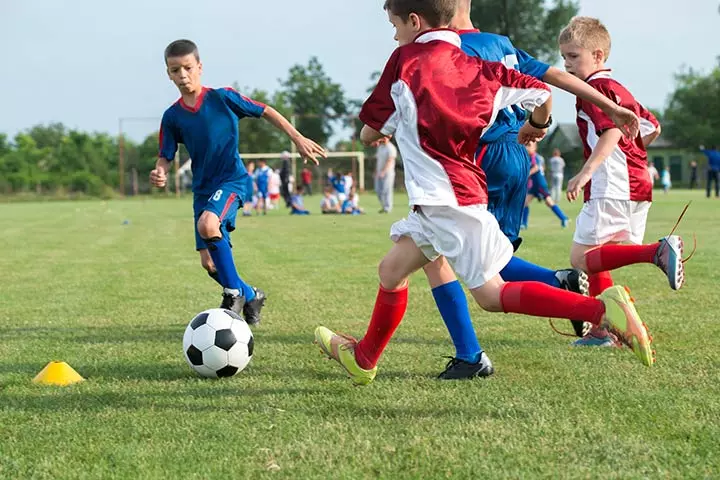
Soccer helps children learn to balance. Juggling the ball while finding teammates will improve the foot dexterity. Constant running will benefit their cardiovascular health and endurance levels. But soccer is not entirely safe. Hazards like ankle twist and shin splints are common. Heading when done incorrectly can lead to concussions and even brain injuries. To prevent it, the American Academy of Pediatrics recommends against purposeful heading of the soccer ball before the age of 13, as younger children’s brains are more susceptible to injury.
Kageno, a blogger, reflects on how sports shaped his childhood and the invaluable lessons he gained from them. He shares, “When I was young, I couldn’t do without sports. My first memories included playing soccer at the local youth league. Today, I can still remember dressing for a game. It was so exciting to run across a pitch and be overjoyed at scoring a goal. Soccer introduced me to the sporting universe; there, I learned about teamwork, resilience, and keeping fit all through life.” She adds, “With time passing by, other sports disciplines found their place in my interest. Next came basketball, which became another obsession of mine. The coach who put me up to join the school team taught us discipline and hard work, among other things (ii).”
2. Swimming
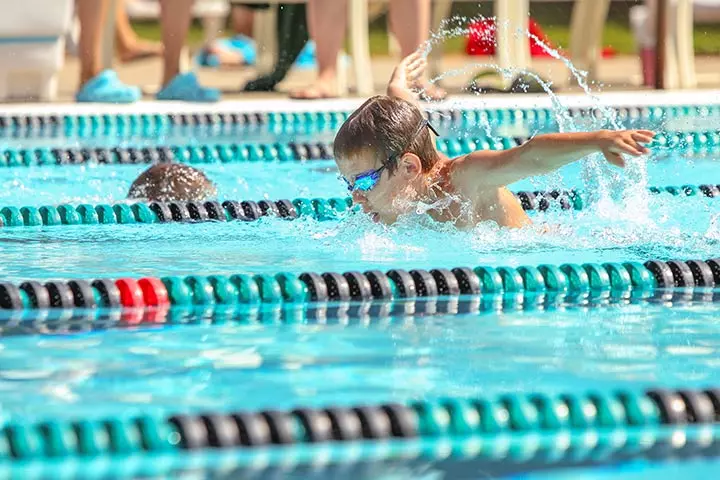
Is your child strong enough to tackle the fear of heights and water? Then you can enroll him in swimming classes. Swimmers receive one-on-one time with coaches while enjoying the social benefits of being a part of a team. Your kid will be able to focus on development by improving his swimming ability without any comparison to anyone else in the team. This is one of the fun sports for kids that will keep them physically active and entertained.
3. Cheerleading
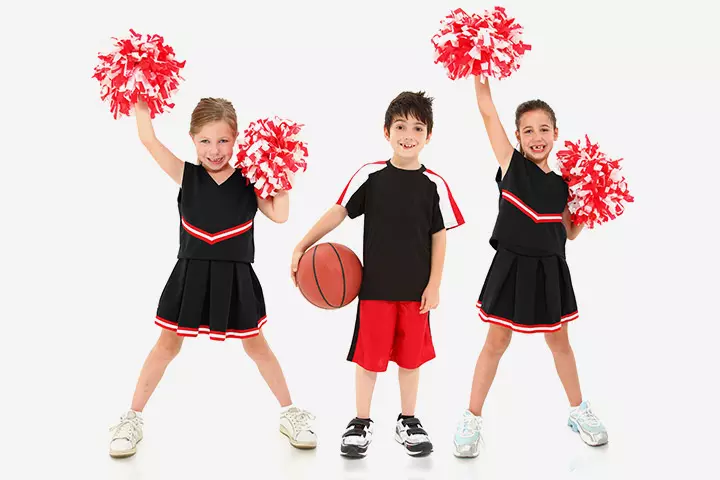
Cheerleading is the ultimate sport for teaching teamwork to little girls. Even if one participant is not in sync, the whole routine can go off. Besides teaching team-building children, cheerleading also promotes agility and flexibility with its leaps and flips. Unlike other sports, cheerleading conditions and tones the body as well. It can be one of the best sports for kids.
4. Rugby
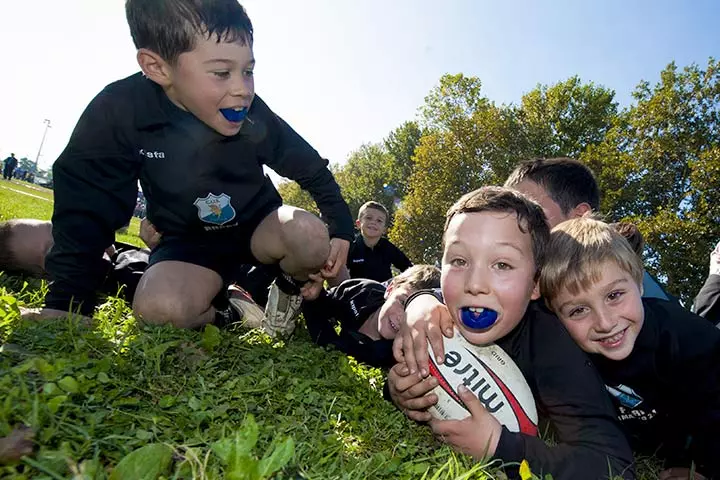
It is one of the all-team sports for kids, where they learn that they cannot win alone. And the duration and intensity of the practices teach time management skills. Deep concussions and bruises are common in this sport. So instruct your child to wear a helmet and padding all the time.
5. Bicycle
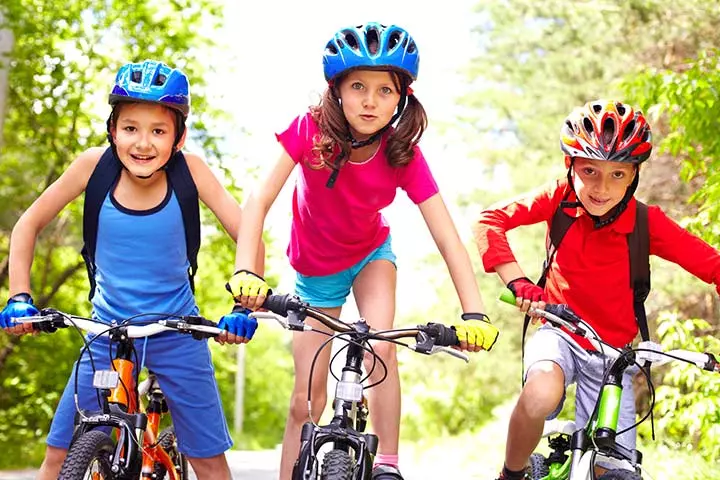
Every kid has at least once tried to ride a bicycle with mom or dad holding the back of the seat. In addition to being loads of fun, bicycling is a great form of exercise as well. Have your child start with a three-wheel tricycle and then proceed to a two-wheel with a training wheel. Once your child has mastered it, take off the training wheels. But do not let the kids ride multi speed bikes or bikes with hand brakes until the age of 9.
6. Basketball
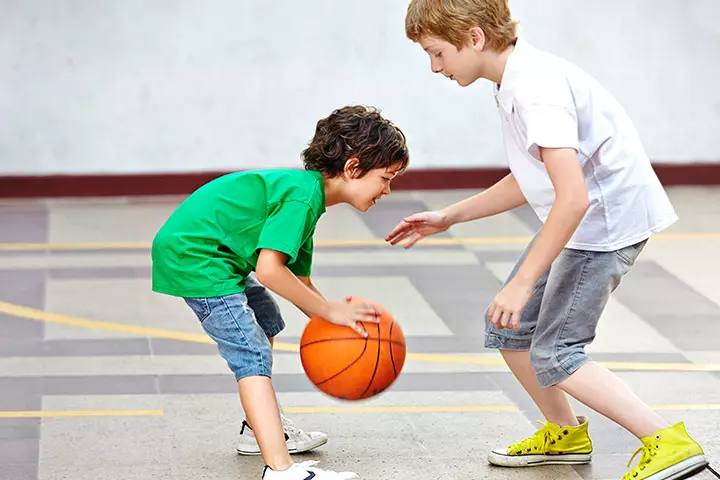
Basketball is one of the most fun ball games for kids. The sport is easy to organize as it relies on the least amount of sports equipment, which includes a ball and a park hoop. Basic moves like quick passes and dribbling will improve your child’s hand-eye coordination. Basketball is also the least dangerous of all the sports. The worst that can happen is occasional eye poke and pulled hamstrings.
 Point to consider
Point to consider7. Inline skating
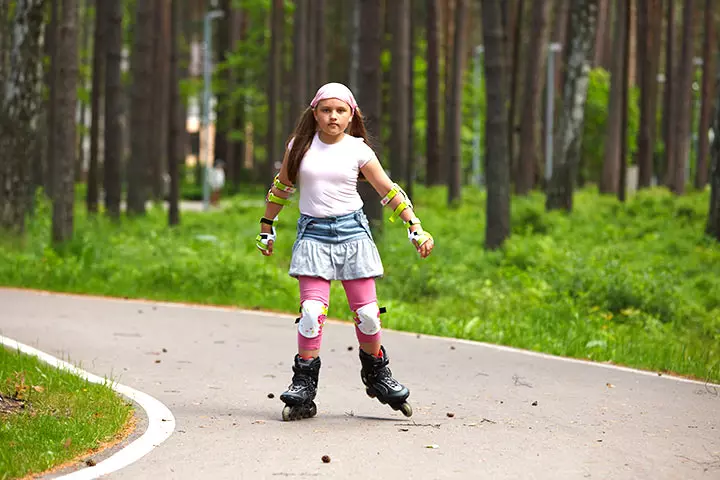
Inline skating is a very popular activity with kids these days. Children can start inline skating at the age of 4 or 5. Take your child for tutoring with a professional and ensure that they wear all the gear,including knee pads, elbow pads, and wrist guards. And do not gasp in horror at the thought of your child falling on the concrete. The management undertakes several safety measures to keep the children safe as they zip around on skates.
8. Baseball
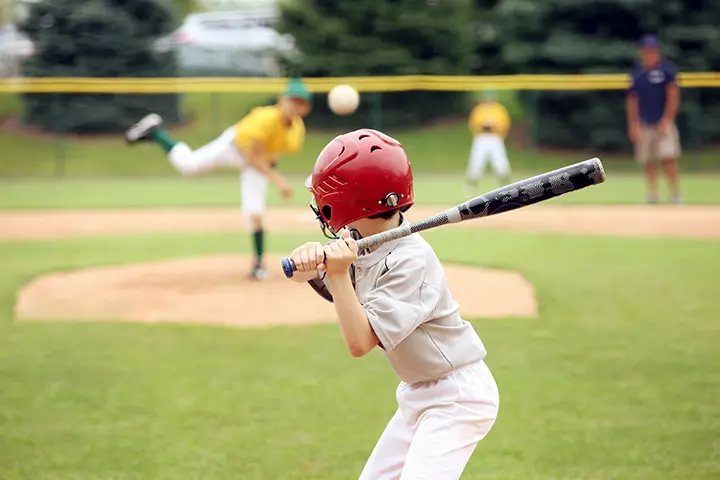
Many little boys and girls grow up dreaming of being baseball players. So if your kid aspires to be the same, then why not make him start early. Children as young as six years of age can learn baseball. In fact, over 3 million kids aged 5 and 18 participate in the Little League Baseball organization.
Baseball will improve hand-eye coordination, physical strength and balance in children. It will also help him learn about teamwork, discipline, leadership and citizenship. And it’s pretty harmless, with typical injuries like pulled hamstring and elbow injuries. This is one of the great sports for kids to play.
9. Hockey
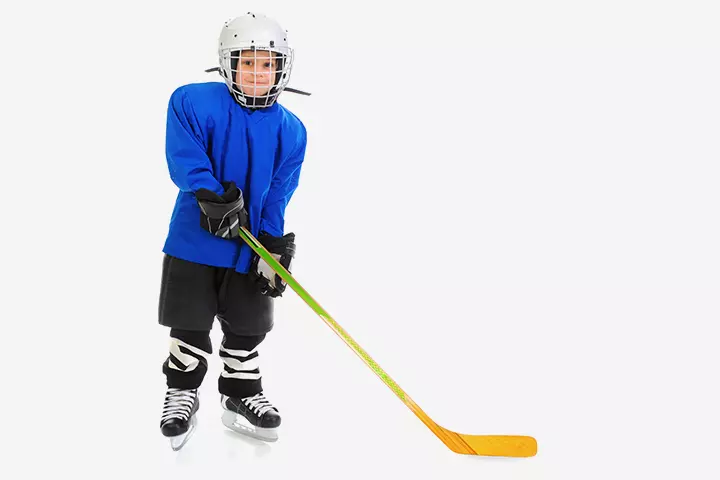
Hockey is a good sport for kids to gain endurance, leg strength, and dexterity by controlling a fast-moving puck with the stick. Children will learn to run around the rink at 10 miles per hour while flinging themselves at one another along the way. The culture of fighting has softened but hasn’t gone away. So proper equipment is a must. It may not keep your child 100% injury-free, but will make a difference.
10. Golf
It is a lot more fun than it might appear from lame Father’s Day cards. Your kid can continue playing even as he turns into an adult, as a parent-kid activity. 5 to 8 is a good time to start learning golf. If your child is genuinely curious about golf, then you can visit a driving range with him so that he can enjoy golf in a little pressure and low-cost environment. It will help your child become focused and independent as well.
11. Cricket

Cricket is a popular sport worldwide and a great one for children to gain physical and mental benefits. Whether batting, bowling, or fielding there’s ample scope for aerobic workouts and coordinated movements. The sport teaches teamwork, discipline, responsibility, patience, strategic planning, and analysis of various situations. Cricket can be played both for fun and competitively and children above five are usually suitable to learn it.
12. Lacrosse
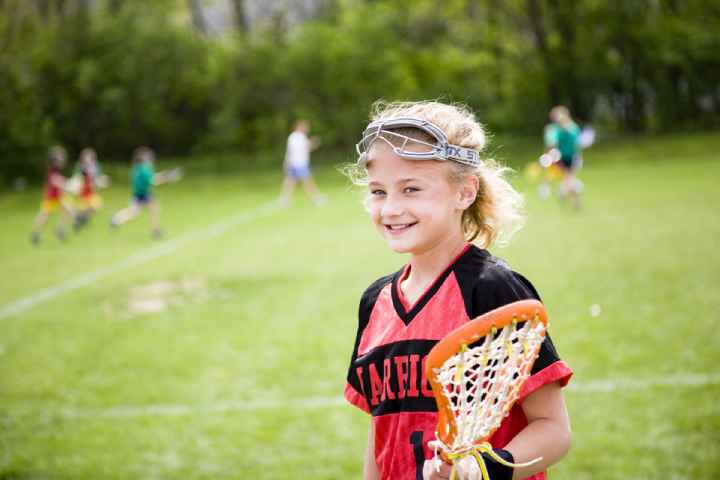
This contact sport is fun and fast. It helps children gain speed, power, coordination, and agile reflexes. Even if your child is into another sport, Lacrosse can be a great way to maintain fitness. Children can excel in the sport regardless of their height. It also helps them learn leadership skills and teamwork.
How To Choose The Right Sport For Your Child
Choosing the right sport for your child means balancing their interests, abilities, and well-being while ensuring they stay safe and have fun. The American Academy of Child and Adolescent Psychiatry also suggests that parents ensure their children make the most of sports participation (3). Here’s how to make the best choice (4) (5) (6).
- Identify their interests: Watch how your child spends their free time—do they love running around, kicking a ball, or balancing on objects? Their play habits can reveal what kind of sport suits them best. A child who enjoys fast-paced activities might thrive in soccer or basketball, while one who prefers strategy and focus could enjoy chess, martial arts, or gymnastics.
- Encourage exploration: Let them experiment with different sports through camps or school programs. Exposure to various options helps them discover what excites them most.
- Evaluate their physical strengths: Every child has unique strengths—some excel in speed and agility, while others thrive in endurance-based sports. Choose one that complements their abilities.
- Look at the benefits: Sports shape a child’s physical, emotional, and social growth. Some foster teamwork and leadership, while others enhance self-discipline and focus. Select one that positively influences their development.
- Focus on enjoyment over pressure: Sports should be fun, not stressful. Choose an environment that nurtures skill-building and enjoyment rather than intense competition. Also, allow your child to make their own choices and switch sports if needed.
- Prioritize safety: Some sports pose higher risks of injury or long-term strain. Consider your child’s physical demands and provide them with protective gear and proper training.
- Consider practical aspects: Consider accessibility, costs, practice schedules, and long-term commitment before finalizing a choice.
Frequently Asked Questions
1. What strategies can parents use to ensure their children’s safety when playing sports?
Parents should supervise their children while they play sports and ensure they are using protective gear, are familiar with the rules, have completed their warm-up activities, and are not playing if they are injured.
2. What are the potential risks and dangers of youth sports?
When sports are played following the rules and with due regard for safety protocols, they don’t necessarily present a risk. Nonetheless, parents should constantly keep track of how their child feels after participating in a sport to see whether it is suitable for them.
3. What are the most common injuries children may experience while playing sports, and how can they be prevented?
Children playing sports may commonly suffer from strains, sprains, and fractures, especially in their lower limbs. Factors like limited motor skills, growth spurts, and uneven bone and tissue development increase the risk (7). To prevent injuries, they should warm up, use protective gear, practice good technique, avoid overuse, stay hydrated, and prioritize rest and recovery.
4. What safety precautions should be taken during outdoor sports activities?
To ensure safety during outdoor sports, it’s important to warm up and stretch beforehand. Wear the right protective gear, like shin guards and helmets. Use shoes with molded cleats or ribbed soles. Secure goal posts and pad them. Fill in low and bare spots on the field. Play with synthetic balls on wet fields. Lastly, have an emergency plan to quickly reach medical help for serious injuries (8).
5. How important is proper warm-up and stretching before engaging in sports activities, and what are the potential risks of skipping these preparations?
Proper warm-up and stretching are crucial before sports activities. They enhance blood flow, deliver nutrients, and lubricate joints, reducing the risk of injury. Skipping these preparations can lead to decreased flexibility, limited range of movement, and higher chances of getting injured (9).
6. Are there any specific safety considerations for contact sports like football or martial arts?
Safety precautions for contact sports such as football or martial arts involve wearing appropriate safety gear that meets national standards. It is vital to perform warm-up and cool-down stretches, stay hydrated by drinking plenty of fluids, follow a balanced diet, and get enough sleep. Moreover, it is advisable for children to be at least six years old before participating in team sports (10).
7. What are the signs and symptoms of a concussion, and how should they be managed when a child is participating in sports?
The signs and symptoms of a concussion in sports comprise mental confusion, headaches, tiredness, dizziness, and forgetfulness. Evaluating concussions should prioritize their severity, requiring immediate medical assessment in cases of loss of consciousness. Preventive measures involve rule adjustments, helmet utilization, and physical conditioning (11).
8. How important is proper hydration during sports activities, and what are some practical tips to ensure kids stay hydrated?
Staying hydrated is vital for sports. Insufficient fluids can lead to overheating, tiredness, reduced thinking, slower body processes, and subpar performance. To stay hydrated, children should drink ample fluids before, during, and after exercise, observe urine color, and replenish lost fluids. Relying on thirst isn’t enough, so being proactive about hydration is crucial (12).
9. What role does proper nutrition play in sports safety and injury prevention for kids?
Proper nutrition is vital for children’s sports safety and injury prevention. It boosts well-being, aids tissue healing, and aids recovery. Strategies like amino acids, proteins, antioxidants, creatine, and omega-3 help prevent muscle loss, promote healing, and lower injury risk (13).
Taking part in sports and extracurricular activities for kids is the best way to get regular physical activity. You may enroll your child in sports clubs so that they can find the one that they can master. Sports games training helps children stay active and organized. Mastering certain sports can also help them choose sports as a career if they perform well. This may also promote mental well-being and enhance self-esteem and confidence in children. They may also learn to interact with teammates and learn social skills. Sports are also fun, and it reduces stress and anxiety in children.
Infographic: How Do Children Benefit From Participating In Sports?
With the increased pressure of studies and time with their electronic gadgets, involving children in sports can be a good escape to the outdoors. Let’s dive into this infographic to explore the remarkable benefits of playing sports for children and how it helps in their development.
Some thing wrong with infographic shortcode. please verify shortcode syntaxIllustration: Top Sports For Kids To Play And Their Benefits

Image: Stable Diffusion/MomJunction Design Team
Personal Experience: Source
MomJunction articles include first-hand experiences to provide you with better insights through real-life narratives. Here are the sources of personal accounts referenced in this article.
i. Childhood Needs Outdoor Play;https://youthdevelopmentthrurecreation.wordpress.com/2018/12/01/childhood-needs-outdoor-play/
ii. A Journey Through Sports;
https://medium.com/in-for-a-penny/a-journey-through-sports-565bbe81bb04
References
- Health Benefits
https://projectplay.org/youth-sports/facts/benefits - Benefits of Youth Sports
https://odphp.health.gov/sites/default/files/2025-09/YSS_Report_OnePager_2020-08-31_web.pdf - No. 61; Updated February 2013
https://www.aacap.org/AACAP/Families_and_Youth/Facts_for_Families/FFF-Guide/Children-And-Sports-61.aspx - Choosing the Best Sports For Your Child
https://thrive.psu.edu/blog/choosing-the-best-sports-for-your-child/ - Choosing the Right Sport for Your Child: A Parent’s Guide
https://sportzvillagefoundation.org/choosing-the-right-sport-for-your-child-a-parents-guide/ - How to Choose the Right Sport for Your Child
https://www.hss.edu/article_choosing-sport-for-your-child.asp - Lara Costa e Silva; (2025); Sports injuries patterns in children and adolescents according to their sports participation level age and maturation
https://www.ncbi.nlm.nih.gov/pmc/articles/PMC8908692/ - Outdoor Sports Safety Tips
https://www.nicklauschildrens.org/patient-resources/health-and-safety-information/outdoor-sports-safety-tips - Fit For Flight
https://www.faa.gov/pilots/safety/pilotsafetybrochures/media/FitFor_Flight.pdf - Sports Safety
https://www.nationwidechildrens.org/specialties/sports-medicine/sports-medicine-articles/sports-safety - Concussions in Sports
https://www.nationwidechildrens.org/specialties/sports-medicine/sports-medicine-articles/concussions-in-sports-article - Exercise – the low-down on hydration
https://www.betterhealth.vic.gov.au/health/healthyliving/Exercise-the-low-down-on-water-and-drinks - Hüseyin Hüsrev Turnagöl; (2025); Nutritional Considerations for Injury Prevention and Recovery in Combat Sports
https://www.ncbi.nlm.nih.gov/pmc/articles/PMC8746600/
Community Experiences
Join the conversation and become a part of our nurturing community! Share your stories, experiences, and insights to connect with fellow parents.
Read full bio of Nya Dobbs
Read full bio of Manjiri Kochrekar
Read full bio of Harshita Makvana
Read full bio of Trisha Chakraborty



















